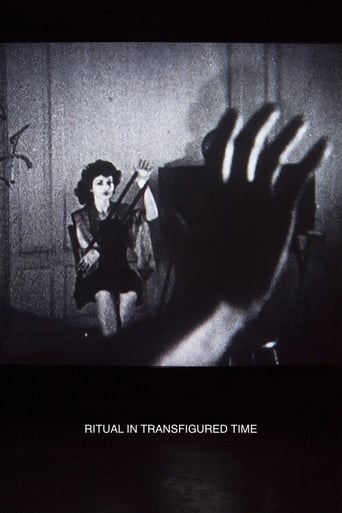

Great visuals, story delivers no surprises
... View MoreI cannot think of one single thing that I would change about this film. The acting is incomparable, the directing deft, and the writing poignantly brilliant.
... View MoreExcellent and certainly provocative... If nothing else, the film is a real conversation starter.
... View MoreVery good movie overall, highly recommended. Most of the negative reviews don't have any merit and are all pollitically based. Give this movie a chance at least, and it might give you a different perspective.
... View MoreMaya Deren was an Avant-garde filmmaker who made experimental, dream-like narrative films during World War II. Her films were meant to use symbolism to convey a story or an idea. In her previous shorts, "Meshes of the Afternoon" and "At Land" we are told of a woman's struggles through symbolic objects and surrealism. This gives all her shorts a mysterious and dreamlike atmosphere. Watching them as a film with a story, you'll be left wondering "Huh? What just happened here?" So to analyze a film like this, you must watch it, then look at the symbolism, think about it, and piece together the narrative entwined into the imagery.In "Meshes of the Afternoon" a woman is struggling with her marriage, wondering if she made a good decision. This film (the director's first film) may have come from Deren's own life, as she had three different husbands. And in "At Land" the woman portrayed is struggling with her place in life. Maybe at one point, Deren too struggled with this same problem. Here, in this film, the woman shown is struggling with men.In the beginning, the woman is innocent. She knows no men and is free. After helping another woman ball up some yarn (symbolic of something, but I can't think what) a mysterious woman lures her into a new world: a world of men, which she knows nothing about.The woman is taken into a ballroom with people exchanging hands and talking. At first they are oblivious to her, communicating to us that men no nothing of her, either. But soon she has become part of their world too, a decision which she later regrets.Later, out in the garden a man is talking with other women. The woman we have been following looks on and watches. She sees the man freeze the other woman in time. The woman is shocked and tries to escape the world she has entered. She runs away while the man chases in choreographed movement. And, in a final pose, we see the woman shining as an angel, telling us she has finally freed herself of the world she had entered and is clean once more.Rita Christiani played the woman, while Maya Deren herself plays the woman at the beginning. The film is beautiful and artful. Who knows? Deren married three times, maybe that fact shows us that she too, like the woman in the film, struggled with men?
... View More"Ritual in Transfigured Time" is a film by experimental movie maker Maya Deren. She made this one shortly after World War II when she was still in her 20s. Basically everything that applies to her other works describes this film as well. It's very experimental, has no real storyline, is in black-and-white and looks much older than from 70 years ago. Deren appears in this film herself, but there are also other cast members. The film runs for 15 minutes and is thus among her longest movies. The story does not really have anything to do with war or the political climate. The first half we see a party for example with really a lot of guest. Must have been a big occasion. The second half has some ancient references with statues etc. All in all, I am not a great fan of Deren's works and this movie here does not change my perception. Not recommended.
... View MoreThe first five minutes of Ritual in Transfigured Time (1946 )are probably the finest she did up until then. That first third still partakes of that atmosphere dreamline and supine characteristic of her earlier work, but stripped from that which the mind is quick to associate meaning to, that symbolic quality is often an end in itself rather than a means. The beauty of the surreal, and perhaps the most difficult thing to achieve, is to create the situation the viewer will project upon his own feelings rather than try and decipher the filmmaker's. The film still guides you in that it chooses X visual instead of Y but there's no right or wrong interpretation to be deciphered. Kind of like walking around London with a map of Berlin without knowing you're in London or the map is of Berlin. The scene in the crowded room wasn't quite as good, it's still a drone, but not a visually interesting one I thought. The dancing segment that closes the film recalls A Study in Choreography for Camera but how it all ties in remains a mystery.
... View MoreRitual in Transfigured Time may be the piece in which Maya Deren puts all her interests and achievements: a surrealistic narrative and dance choreographies. It is beautiful and powerful, but may have too many elements to be coherent and to possess her earlier works' strength.
... View More